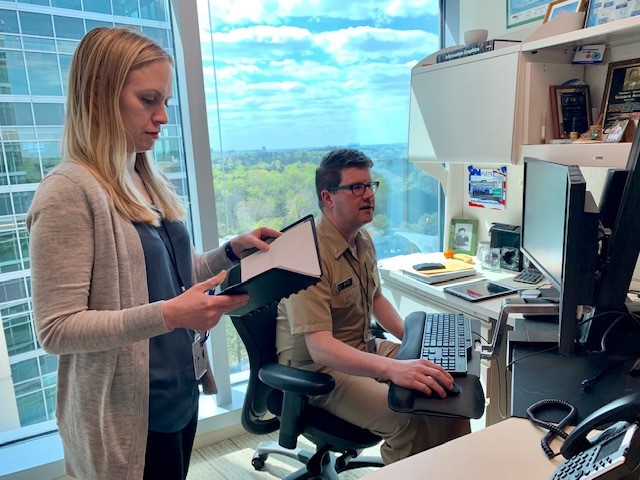Multistate Outbreak of Salmonella Mbandaka Infections Linked to Sweetened Puffed Wheat Cereal—United States, 2018
- This was a unique investigation. We found an uncommon strain of Salmonella in an unlikely product. Historically, Salmonella infections are associated with foods such as chicken, eggs, and fresh produce products. In May of 2018, CDC’s PulseNet detected a multistate cluster of ill people infected with Salmonella Mbandaka. We investigated to determine the source of the outbreak and prevent additional illness. Epidemiologic and laboratory evidence indicated that a cereal was the likely source of this outbreak. A total of 136 cases from 36 states were identified; 35 hospitalizations and no deaths were reported. Sixty-three (75%) of 84 ill people interviewed reported consuming a specific sweetened puffed wheat cereal in the week before they got sick.
- This outbreak investigation highlighted the ability of Salmonella to survive in dry foods like ready-to-eat cereals. It also showed how voluntary interviews from ill people are a key component to foodborne outbreak investigations. Investigating this outbreak was difficult. Ill people reported eating many different kinds of foods, but there was not a common food item. I began asking ill people broader questions about the things they ate and did in the week before they became sick. When two people mentioned eating the same specific cereal it piqued my interest because it was not a very common exposure. Additional interviews with ill people showed that many of them ate the same cereal in the week before becoming ill. With this information, regulatory officials tested the cereal and found the outbreak strain in the cereal and in the facility where it was processed. Information from two ill people really helped find the source of this outbreak and prevent further illness.
- This is a reminder for public health investigators to consider all potential food products during Salmonella outbreak investigations, since unlikely food items like cereal may cause large outbreaks. Identification of unlikely products is critical because they may have a high production volume, a wide distribution area, and a long shelf life. It is also a reminder that information from ill people plays a critical role in identifying the source of foodborne outbreaks. Public health investigators can look to this outbreak as an example of an outbreak linked to an unlikely food item identified through a strong epidemiological investigation.
“Of the 84 ill people interviewed, 63 reported eating a specific sweetened puffed wheat cereal in the week before they got sick, a product that is very different from the eggs, meat, poultry, and produce we usually see associated with Salmonella infections. This investigation was a reminder to consider all potential food products during outbreaks. Products that aren’t traditionally associated with foodborne outbreaks may have a high production volume, a wide distribution area, and a long shelf life.”
– Amelia Keaton, MD, MSc, EIS Class of 2017
 [JPG - 102 KB]
[JPG - 102 KB]EIS officer Amelia Keaton, MD, MSc, reviews data with Deputy Branch Chief for Outbreak Response in CDC’s Division of Foodborne, Waterborne, and Environmental Diseases, Matthew Wise, PhD, MPH
EIS officer Amelia Keaton, MD, MSc, conducts a phone interview with a patient during the outbreak investigation
CDC Media Relations
(404) 639-3286
media@cdc.gov

Amelia Keaton, MD, MSc,
EIS Class of 2017
CDC National Center for Emerging and Zoonotic Infectious Diseases
Education: MD: University South Carolina, 2011
MSc: University of Pennsylvania, 2015-Present
BS: Wofford College, South Carolina, 2006
Work Experience: Research Scholar, NIH,
2008-2009; Student Researcher, Vanderbilt University
Medical Center 2007; Wofford College, Lab
teaching assistant, 2005-2006
Volunteer Experience: CHOP Pediatrics Infectious Disease
Fellowship, Lecture Coordinator, 2016-Present